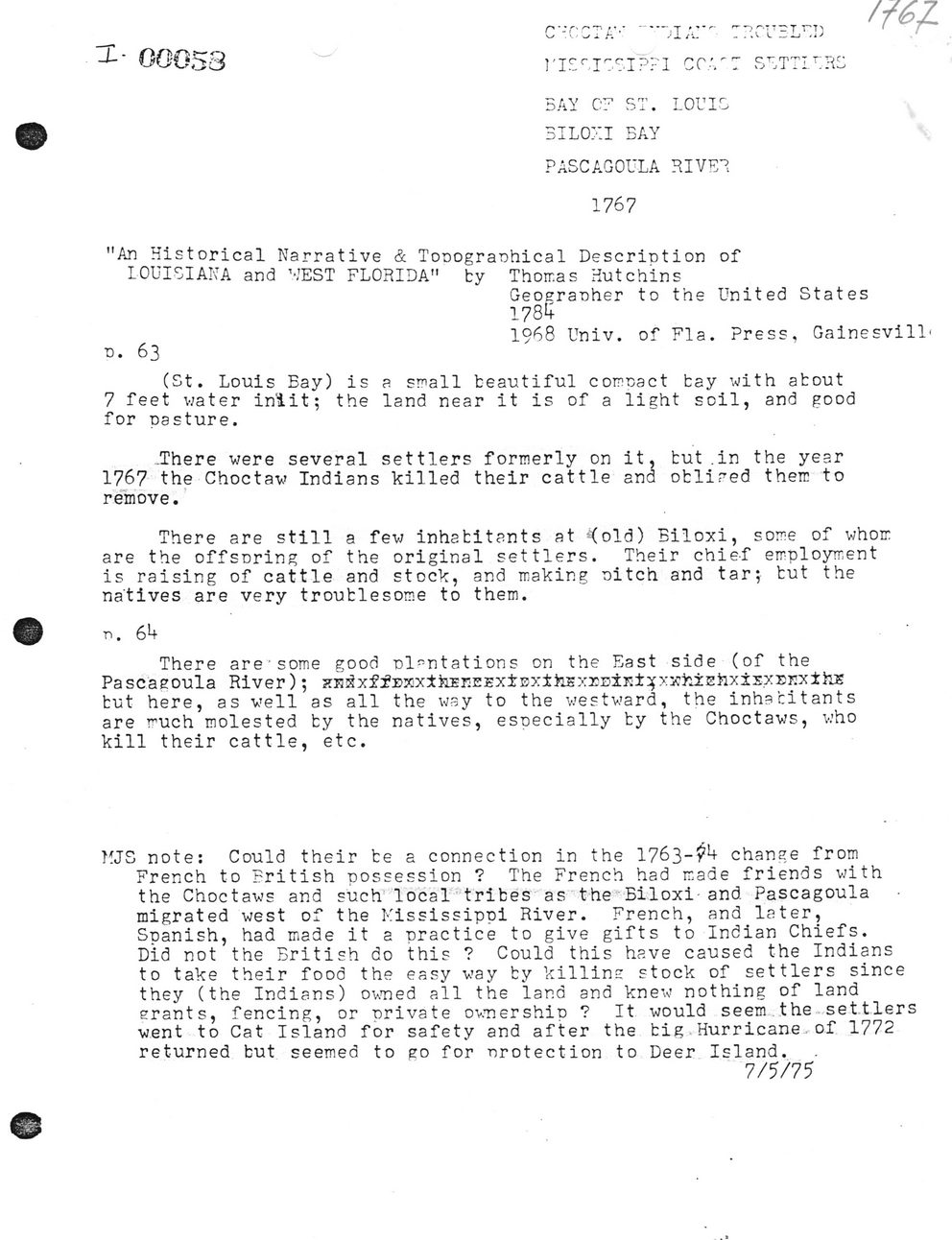This text was obtained via automated optical character recognition.
It has not been edited and may therefore contain several errors.
PASCAGOULA RIVE! 1767 "An Historical Narrative & Topographical Description of LOUISIANA and ??JEST FLORIDA" by Thoir.as Hutchins Geographer to the United States 178^ 1968 Univ. of Fla. Press, Gainesvill' p. 63 (St. Louis Bay) is a small beautiful compact bay with about 7 feet water iniit; the land near it is of a light soil, and good for pasture. .There were several settlers formerly on it, tut .in the year 1767 the Choctaw Indians killed their cattle ana obliged there to remove. There are still a few inhabitants at <old) Biloxi, some of whoir are the offspring of the original settlers. Their chief employment is raising of cattle and stock, and making pitch and tar; but the natives are very troublesome to them. n. 6U There are'some good plantations on the East side (of the Pascagoula River); xK^xfiExxlkEEEExiExihsxEEiEi^xftzEhxisxExxifts but here, as well as all the way to the westward, the inhabitants are much molested by the natives, especially by the Choctaws, who kill their cattle, etc. MJS note: Could their be a connection in the 1763-^*+ change from French to British possession ? The French had made friends with the Choctaws and such local tribes as the Biloxi-and Pascagoula migrated west of the Mississippi River. French, and later, Spanish, had made it a practice to give gifts to Indian Chiefs. Did not the British do this ? Could this have caused the Indians to take their food the easy way by killing stock of settlers since they (the Indians) owned all the land and knew nothing of land erants, fencing, or private ownership ? It would seem the settlers went to Cat Island for safety and after the big Hurricane of 1772 returned but seemed to eo for protection to Deer Island. 7/5/75

Alabama Gulf-Coast-19th-Century-Notes-05